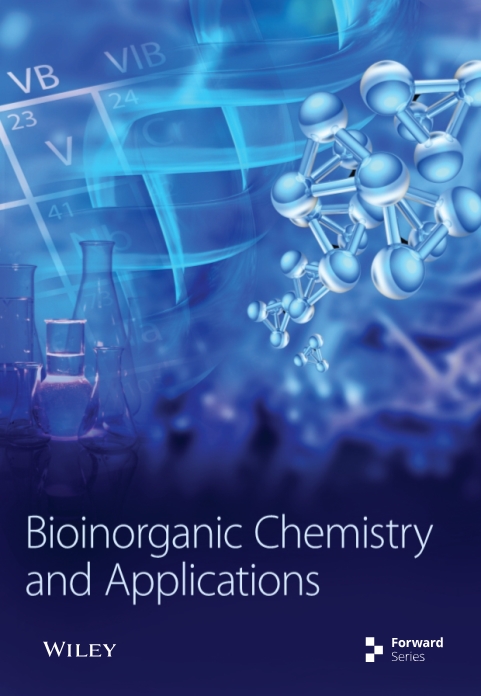姜黄素是检测环境污染物的标志性配体
IF 4.7
3区 化学
Q1 BIOCHEMISTRY & MOLECULAR BIOLOGY
引用次数: 7
摘要
工业革命的迅速发展和随之而来的环境污染要求对污染物进行持续的监测和灵敏的检测。基于纳米材料的传感系统在环境污染物的传感方面已经被证明是熟练的。开发新型配体来提高纳米材料的传感效率一直是一个挑战。然而,用分子配体修饰纳米结构增加了由此产生的新型传感平台的灵敏度、选择性和分析性能。有机配体能够通过减小或分裂带隙来提高纳米材料的吸附效率、光学性能和电化学性能。姜黄素(二苯乙烯基甲烷)是一种天然有机配体,具有固有的荧光和电催化性质。由于酮烯醇互变异构,它能够给出敏感的信号,如荧光、发光、紫外线吸收位移和电化学数据。姜黄素探针在纳米体系中具有低检出限、重复性、可重复性、高选择性和高存储稳定性等增强的气象性能。因此,姜黄素修饰纳米材料在环境污染检测中的研究需要特别关注原型和产品开发,以实现实用化。因此,本文综述了姜黄素作为一种天然荧光基团在环境重要污染物的光学和电化学传感中的作用。这一综述清楚地表明,姜黄素是开发和验证基于纳米材料的传感器的理想候选者,用于检测环境污染物,如砷、铅、汞、硼、氰化物、氟化物、硝基酚、三硝基甲苯、苦味酸和有毒气体,如氨和氯化氢。这将为未来的研究提供参考,并使研究人员能够将实验室概念转化为工业产品。本文章由计算机程序翻译,如有差异,请以英文原文为准。
Curcumin Is an Iconic Ligand for Detecting Environmental Pollutants
The rapid increase in industrial revolution and the consequent environmental contamination demands continuous monitoring and sensitive detection of the pollutants. Nanomaterial-based sensing system has proved to be proficient in sensing environmental pollutants. The development of novel ligands for enhancing the sensing efficiency of nanomaterials has always been a challenge. However, the amendment of nanostructure with molecular ligand increases the sensitivity, selectivity, and analytical performance of the resulting novel sensing platform. Organic ligands are capable of increasing the adsorption efficacy, optical properties, and electrochemical properties of nanomaterials by reducing or splitting of band gap. Curcumin (diferuloylmethane) is a natural organic ligand that exhibits inherent fluorescence and electrocatalytic property. Due to keto-enol tautomerism, it is capable of giving sensitive signals such as fluorescence, luminescence, ultraviolet absorption shifts, and electrochemical data. Curcumin probes were also reported to give enhanced meterological performances, such as low detection limit, repeatability, reproducibility, high selectivity, and high storage stability when used with nanosystem. Therefore, research on curcumin-modified nanomaterials in the detection of environmental pollution needs a special focus for prototype and product development to enable practical use. Hence, this article reviews the role of curcumin as a natural fluorophore in optical and electrochemical sensing of environmentally significant pollutants. This review clearly shows that curcumin is an ideal candidate for developing and validating nanomaterials-based sensors for the detection of environmental pollutants such as arsenic, lead, mercury, boron, cyanide, fluoride, nitrophenol, trinitrotoluene, and picric acid and toxic gases such as ammonia and hydrogen chloride. This review will afford references for future studies and enable researchers to translate the lab concepts into industrial products.
求助全文
通过发布文献求助,成功后即可免费获取论文全文。
去求助
来源期刊

Bioinorganic Chemistry and Applications
化学-生化与分子生物学
CiteScore
7.00
自引率
5.30%
发文量
105
审稿时长
>12 weeks
期刊介绍:
Bioinorganic Chemistry and Applications is primarily devoted to original research papers, but also publishes review articles, editorials, and letter to the editor in the general field of bioinorganic chemistry and its applications. Its scope includes all aspects of bioinorganic chemistry, including bioorganometallic chemistry and applied bioinorganic chemistry. The journal welcomes papers relating to metalloenzymes and model compounds, metal-based drugs, biomaterials, biocatalysis and bioelectronics, metals in biology and medicine, metals toxicology and metals in the environment, metal interactions with biomolecules and spectroscopic applications.
 求助内容:
求助内容: 应助结果提醒方式:
应助结果提醒方式:


